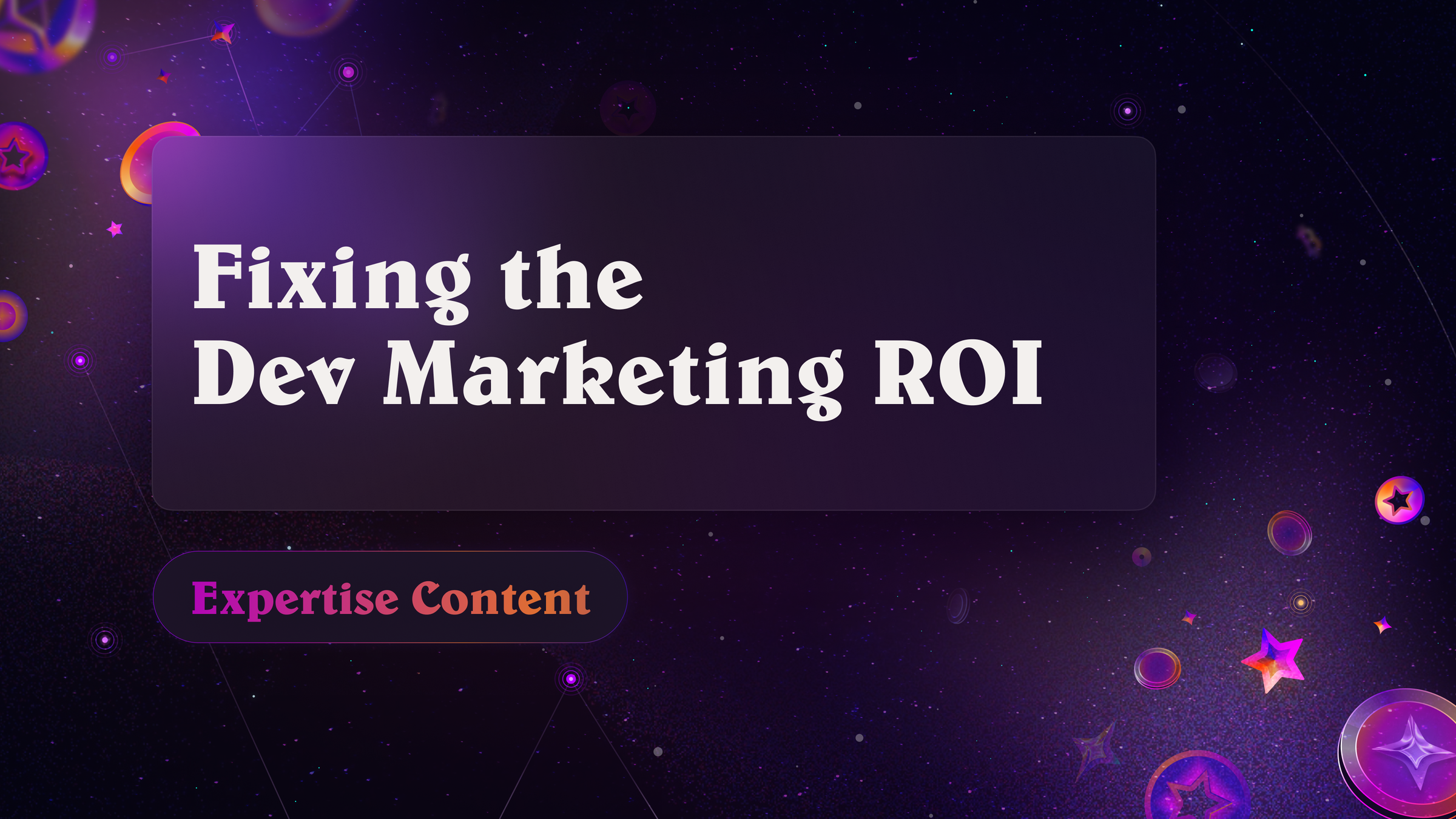→ 60% of devs view hackathons as opportunities to win prizes rather than to innovate or collaborate. Hackathons have morphed into a bounty hunt.
→ 70% of developers who participated in hackathons reported they would not engage again if they felt the event was not genuinely community-driven.
→ 4 out of 5 crypto foundations have no idea about their dev acquisition cost.
→ Every mature ecosystem focuses on building a strong sense of community through initiatives that will boost deeper, lasting engagement.
→ Having a well-structured dev acquisition funnel is key to ensuring newly onboarded talent feel supported in their journey and envision themselves growing in an ecosystem.
Introduction
As always, I want to start by thanking Henri Lieutaud, Head of Ecosystem at the Starknet Foundation; Claire Kart, CMO at Aztec; Dan Hennessy, CMO at Succinct; Maud Bannwart, COO at Alephium; Nader Dabit, Director of Developer Relations at EigenLayer; Phoebe, Full Stack Creative Tech at Massa, who generously shared their insights with me.
I’ve been involved in the crypto space for more than 8 years now and I deeply think this industry is one of the most exciting frontiers in tech today. However, it’s shocking to see that 4 out of 5 crypto foundations have no idea what their developer acquisition costs are.
I’m spending my days discussing with crypto foundations to understand their ecosystem growth strategy and how to help them attract more builders and ensure they stick to their tech. They all share the same grey area when prioritizing dev marketing initiatives and, most importantly, their developer acquisition cost. It’s a world away from the precise metrics you’d see in traditional marketing, where every marketer knows their acquisition costs by heart. Today, I’ll explore why this disparity exists and how we can address these inefficiencies.
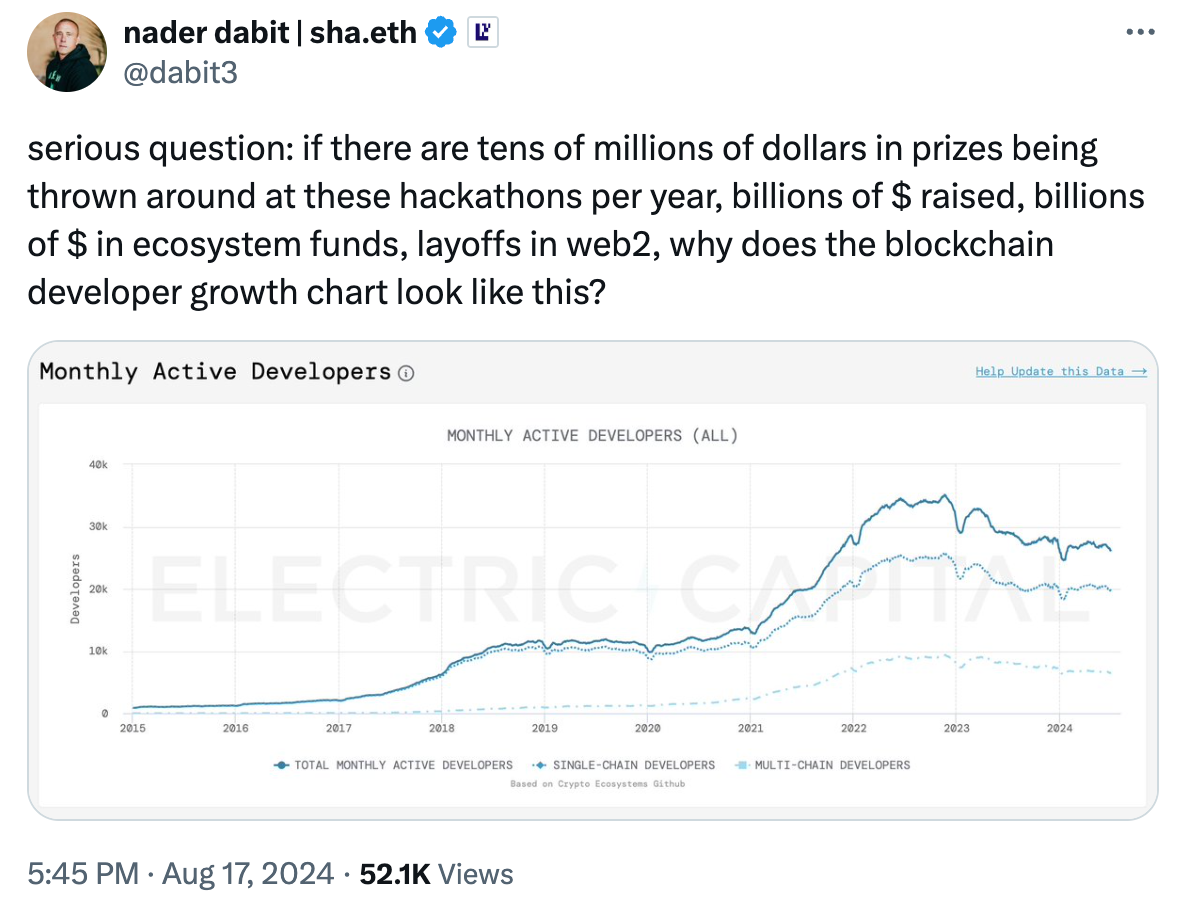
Problem: The Disconnect Between Investment and Results
The False Promise of Hackathons
Hackathons are a big deal for many crypto foundations with costs ranging from $50k to $300k per event (sometimes even more). However, the outcomes are often unclear. What started as a way to genuinely engage developers has morphed into a bit of a bounty hunt. The excitement of tackling complex problems has given way to developers chasing after the cash prizes, which kind of kills the original spirit of these events.

Pheobe, a Full Stack Creative Tech at Massa, notes that this ineffectiveness can also arise from “ecosystems hosting hackathons without having a clear funnel for supporting projects afterward, when they should continue to grow within the ecosystem.” Henri Lieutaud, Head of DevRel at the Starknet Foundation further elaborates that “hackathons are likely a much more efficient tools at later stages of growth of an ecosystem, once it has reached an ‘escape velocity’ in which there is enough companies to hire all newly trained devs that come out of these events.”
The Lack of the Right Tools
It’s paradoxical that despite substantial investments in marketing, grants, and developer incentives, many crypto foundations struggle to measure ROI effectively. Unlike traditional e-commerce, where every dollar spent is tracked meticulously, web3 projects are still figuring out how to measure the effectiveness of their marketing spend. This lack of visibility makes it tough to understand what’s actually working and what’s not. For Henri, “For quantitative analysis tools to be useful, you need a big enough amount of users, otherwise, these tools don't give you the full picture. Most ecosystems are not there yet and need to rely on qualitative indicators, which are harder to systematize.”
Developers Hate marketing

Traditional marketing techniques frequently fall short when it comes to attracting developers. To effectively engage builders, crypto ecosystems need to adopt strategies that resonate with them on a deeper level. According to Claire Kart, CMO at Aztec, the issue arises when “marketers focus on scalable activities in the early days instead of engaging deeply with developers through less scalable initiatives that foster meaningful interaction.”
Based on Phoebe's experience at Massa, it was observed that when the initial incentive was monetary, more than 50% of the identified projects departed once the funding was fully utilized. In response to these results, they redefined their dev acquisition strategy to provide a more structured framework to newly onboarded devs.
Solution: Refactoring Dev Engagement
Quality over Quantity: 20 devs for 6 weeks > 500 for 2 days
Instead of just running hackathons, let’s think long-term. Invest in thorough onboarding resources, support for maintainers, and mentorship programs to cultivate genuine interest and skill development among devs. For example, Succinct is implementing a "month-long residency where participants can build with SP1. They'll be in our office daily, receiving mentorship while creating valuable projects," says Dan Hennesy, CMO at Succinct.
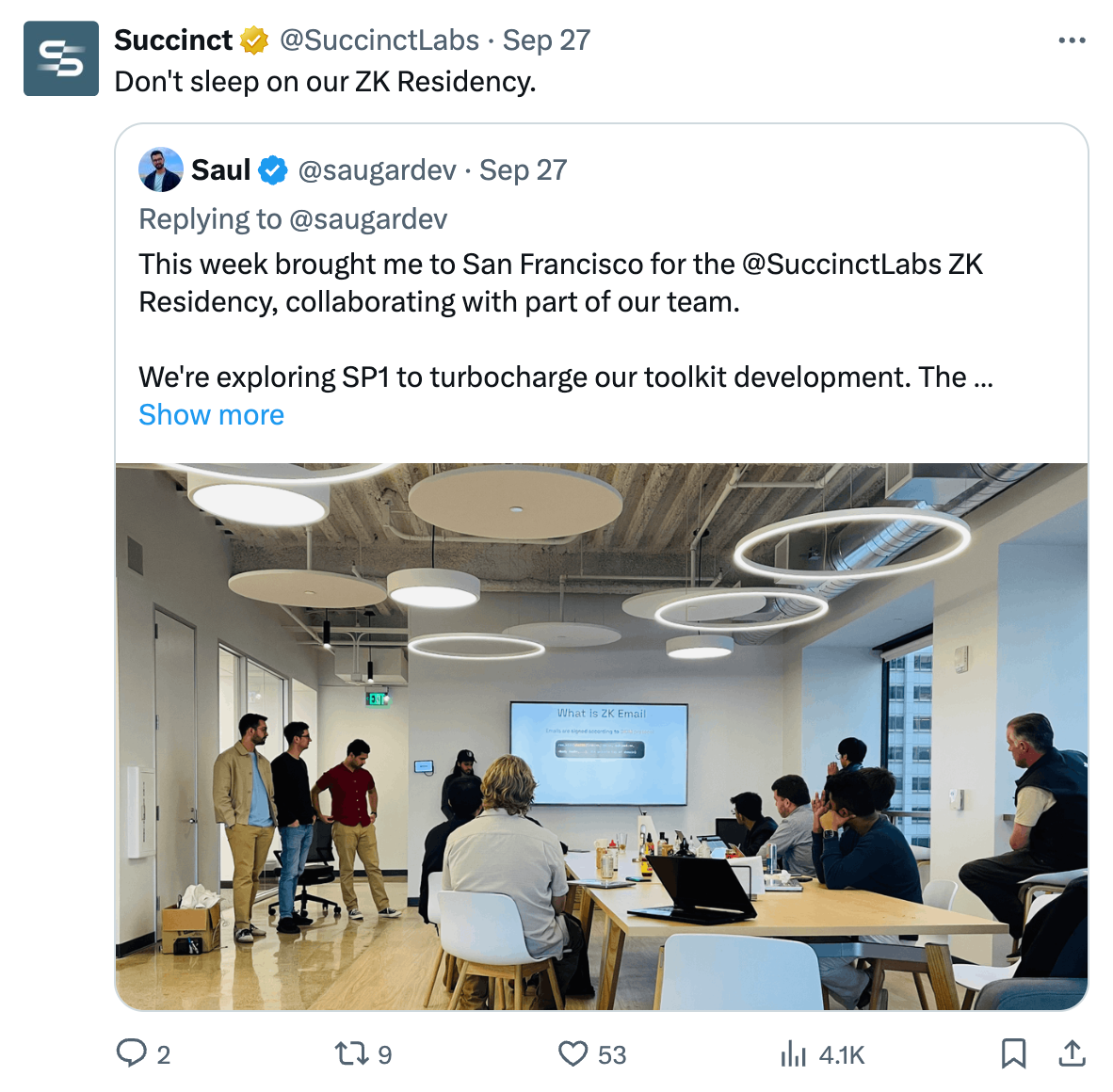
For Henri, “Humans focus on connections. People get baited by tech but they stay because of the network they build and the friendships they make. That’s why Starknet encourages social interactions through events, collaboration on code with OnlyDust and coeducation.”
Maud Bannwart, COO at Alephium shares the same observation: “True innovation happens when developers connect, collaborate, and build together. Alephium empowers builders to leverage and learn from each other’s strengths by creating spaces where they can share knowledge and expertise. This not only accelerates individual growth but amplifies the ecosystem’s collective impact. We’ve seen devs become more invested in not just the code they write, but the community they help shape.”
Attract Developers with Genuine Tech Appeal
Move beyond financial incentives and emphasize the unique technological aspects of your project. Devs who are genuinely interested in the tech will stick around longer than those just in it for the cash. According to Claire from Aztec, this approach involves engaging “a small handful of very engaged users, whom you understand deeply and can tailor your product and messaging to serve.” Aztec implements this through its Alpha Build programs, where a small cohort of builders collaborates with the team over a month-long sprint to develop solutions in three target areas: payments, identity, and gaming.
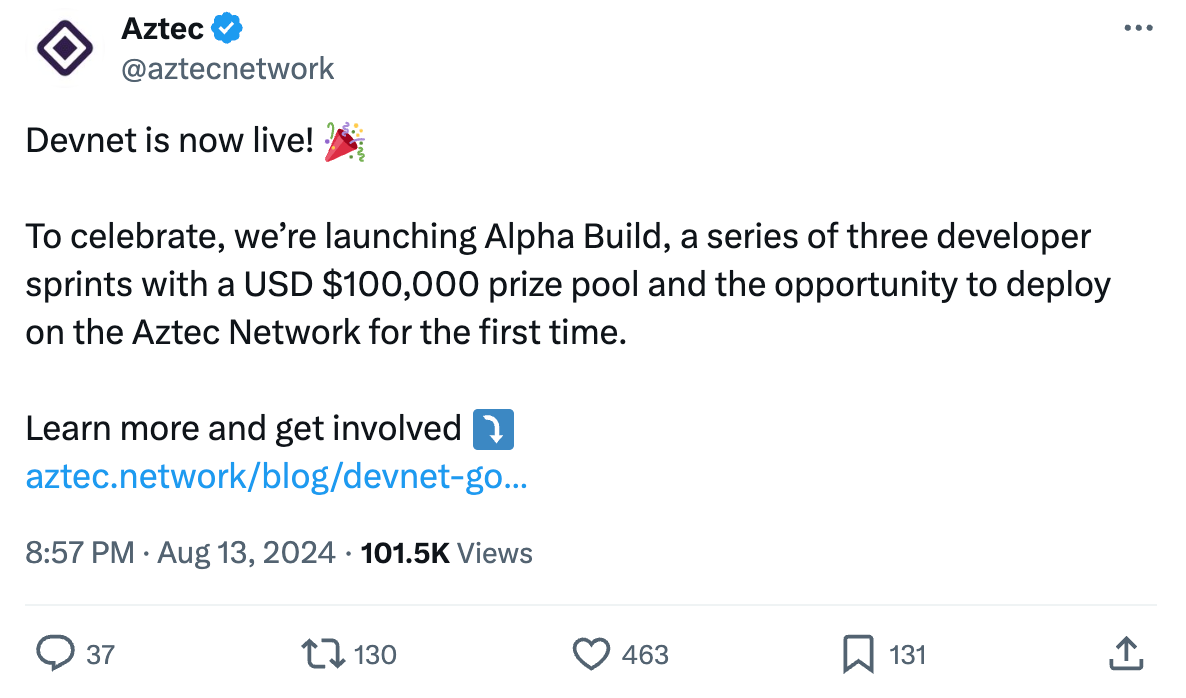
Promote Actionable Online Reputation and Public Resumes
We need to move away from promoting vanity metrics. Who cares about how many hackathons you’ve won? The important metrics are those that reflect technical skills and contributions. Instead, we should focus on tangible achievements, such as PR merged on highly technical repos.
Implement mechanisms that allow developers to build and display their achievements and reputation. Public resumes and verifiable accomplishments can make the ecosystem more transparent and rewarding. For Henri, “It doesn’t stop at displaying your rep online. Ideally, devs want to derive value from it, and you want to incentivize people to actually show their work. At the Starknet Foundation, we use public accomplishments on Node Guardians, OnlyDust and GitHub to select people and we give priority access to our initiatives to those with a proven track record.”
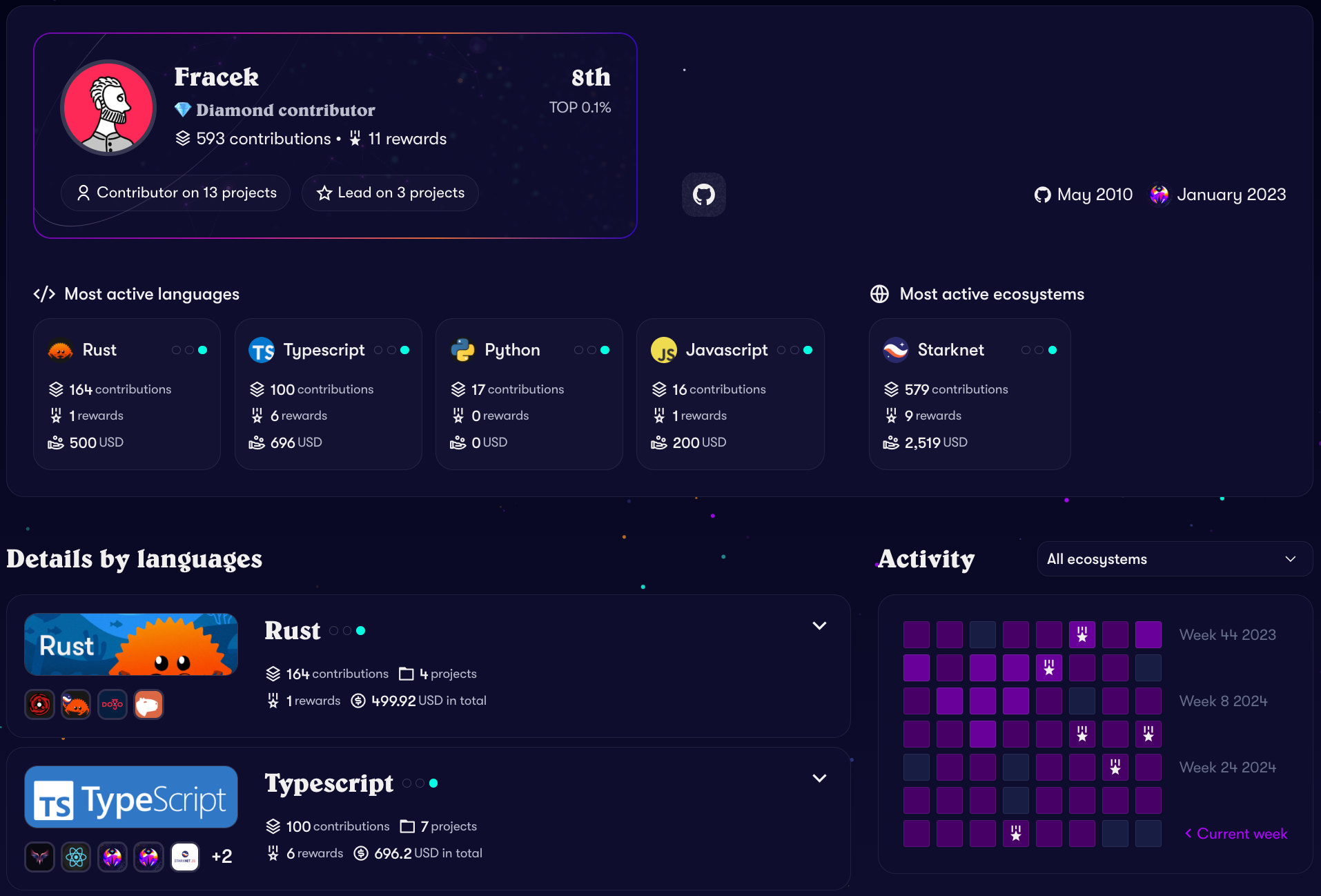
Conclusion
The bottom line is that devs are ultimately drawn to ecosystems not just for the tech, but for the relationships and friendships they build along the way. It’s crucial to recognize that while relationship building can be tough to scale, education is a far more manageable endeavor. As we’ve covered in this piece, all ecosystems are exploring effective ways to educate devs on their tech and ensure they stick around for as long as possible.
From the conversations I had, it seems that the next big thing will be for ecosystems to use the right tools to create a structured funnel that supports devs throughout their entire journey (from newly onboarded contributors to building the top TVL Dapp). I believe this pragmatic approach will improve visibility on the ROI of marketing initiatives. Prioritizing dev support will also be part of the challenge; without helping them succeed, we can’t ensure that momentum remains strong and that every one of them feels valued and empowered within the ecosystem.
I'm currently working on my next article focusing on dev acquisition funnel strategies. If you'd like to contribute to the discussion or chat about benchmarks, please contact me on Telegram @alex_n1n.
